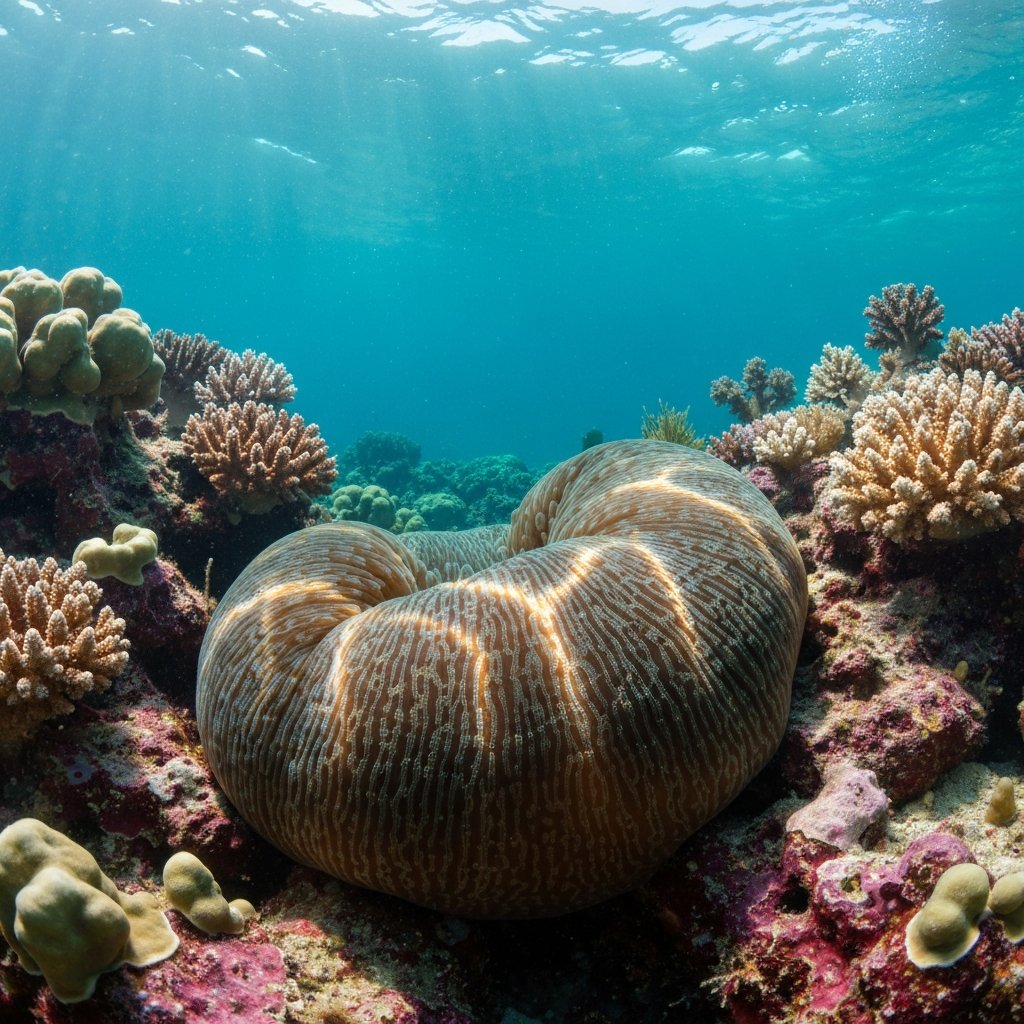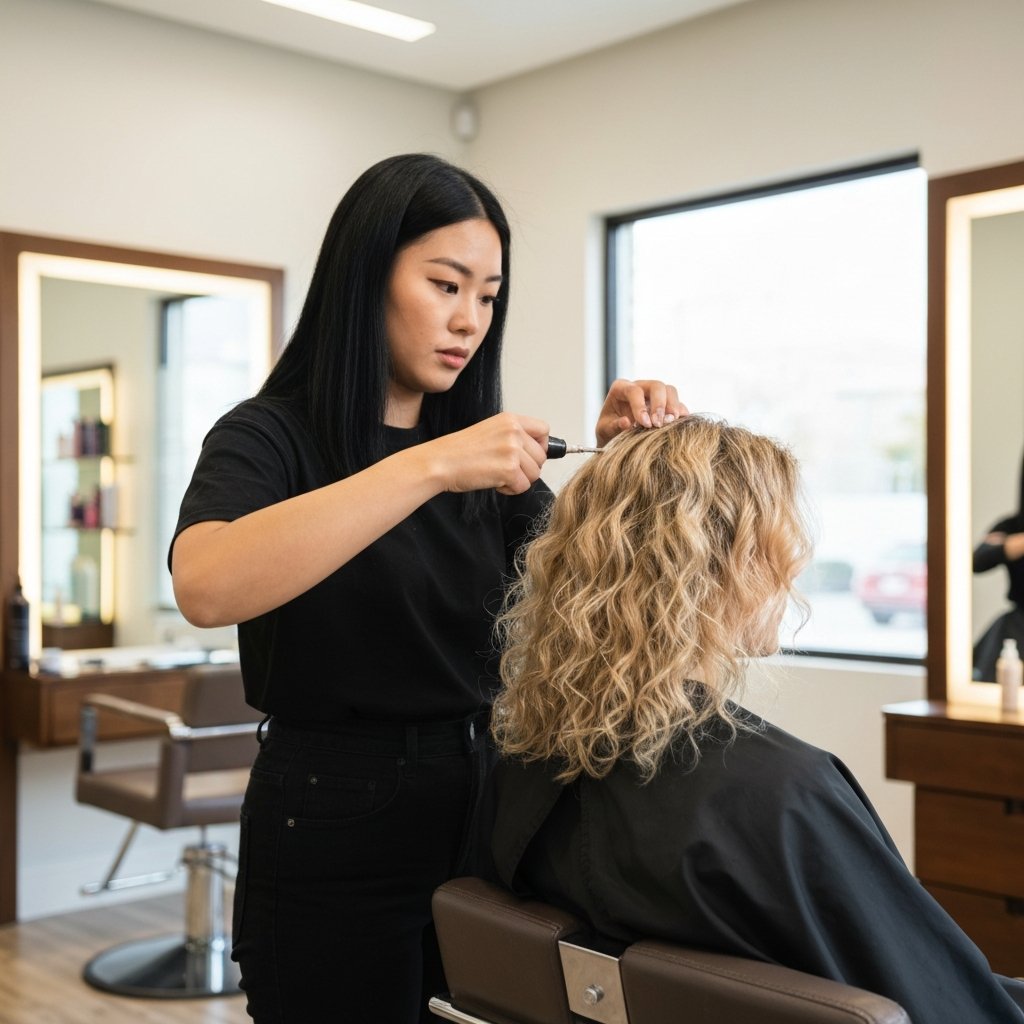
How to Make Fine Hair Look Thicker: Expert Styling Tricks & Product Guide
11 min read

11 min read

11 min read

9 min read

10 min read

9 min read

13 min read
Swimming is one of the most effective full-body workouts available. It builds endurance, tones muscles, and provides a cardiovascular boost without the impact stress of running. However, while the pool is excellent for the body, it can be disastrous for hair health. The culprit? Chlorine. This chemical is essential for keeping pools sanitary, but it acts as a harsh oxidizer that strips natural oils, degrades proteins, and leaves hair dry, brittle, and prone to breakage.
For frequent swimmers, the concept of "swimmer's hair"—characterized by a straw-like texture, faded color, and occasionally a greenish tint—is a constant battle. Yet, sacrificing your swim routine for the sake of your hair isn't necessary. With a strategic approach combining pre-swim defense and post-swim recovery, it is entirely possible to maintain luscious, hydrated locks while enjoying regular time in the water.
This comprehensive guide outlines the best hair care routine for swimming, breaking down the science of chlorine damage and providing actionable steps for protection and restoration. Whether you are a competitive athlete or a casual summer dipper, these professional protocols will ensure your hair remains resilient and healthy.
To effectively combat chlorine damage, one must first understand what happens on a microscopic level when hair enters a treated pool. Chlorine is a disinfectant designed to kill bacteria and break down organic matter. Unfortunately, hair is organic matter. When hair is exposed to chlorinated water, the chemical lifts the hair cuticle—the protective outer layer of the hair shaft. Once the cuticle is raised, chlorine penetrates the cortex, stripping away the hair's natural lubricant, known as sebum.

Sebum is vital for maintaining hydration and elasticity. Without it, the hair structure becomes rigid and snaps easily. Furthermore, chlorine causes oxidation. For those with color-treated hair, this is particularly damaging. Oxidation breaks down the pigment molecules, causing artificial color to fade rapidly or shift tones. Blondes are susceptible to the infamous green tint, which is actually caused by oxidized copper minerals in the water binding to the proteins in the hair shaft, a process accelerated by chlorine.
Over time, repeated exposure without protection leads to high porosity. High porosity hair absorbs water quickly but loses moisture just as fast, leading to a perpetual cycle of dryness. The hair becomes frizzy, unmanageable, and lacks shine. Recognizing these signs is the first step toward implementing a robust protection routine.
Prevention is significantly easier than correction when it comes to chlorine damage. The most critical part of a swimmer's hair care routine happens before stepping onto the pool deck. A common mistake is entering the pool with dry hair. Hair acts like a sponge; it can only absorb a certain amount of liquid. If dry hair is submerged directly into the pool, it immediately absorbs the chlorinated water to its maximum capacity.

The Fresh Water Rinse Strategy The most effective, simplest trick is to thoroughly saturate hair with fresh, non-chlorinated water before swimming. By filling the porous gaps in the hair shaft with clean water, the absorption of chlorinated water is significantly minimized. Most pools have showers on deck for hygiene, but they are also a vital tool for hair protection. Drenching the hair creates a physical buffer against chemical absorption.
Creating a Lipid Barrier Once the hair is wet, the next step is applying a protective barrier. Water alone will eventually leach out, so sealing the cuticle is necessary. Applying a leave-in conditioner, a natural oil (such as coconut or olive oil), or a specialized pre-swim blocking cream provides a hydrophobic layer. Oil and water do not mix; coating the strands in oil repels the chlorinated water. Focus this application on the mid-lengths and ends, which are typically older and more porous than the roots.
While chemical barriers are effective, physical barriers provide the highest level of security. The swim cap is the swimmer’s best friend, though it is often misunderstood. Many believe a swim cap is meant to keep hair perfectly dry. In reality, most caps are not watertight seals. Their primary purpose is to reduce drag and keep hair away from the face, but they also significantly reduce the volume of water flowing through the hair.

Silicone vs. Latex For hair protection, silicone caps are superior to latex. Latex can be grabby and pull at the hair, causing breakage upon removal. Silicone is smoother, more durable, and creates a better seal against the water. For those with long or thick hair, specially designed caps with extra volume are available to prevent tightness headaches and ensure all hair is tucked away.
The Double-Cap Method Competitive swimmers often utilize the double-cap technique, which is highly recommended for hair protection. This involves wearing a thin fabric or lycra cap underneath to prevent pulling, followed by the goggle strap, and finally a silicone cap on top. This sandwich method keeps the goggles secure and creates a tighter seal, keeping the hair drier than a single cap would.
Protective Hairstyles Before putting on a cap, how the hair is styled matters. Tight ponytails with elastic bands can cause stress points that snap when wet. Instead, opt for loose braids or low buns secured with fabric scrunchies or spiral hair ties. Braids are particularly effective as they minimize tangling, which is a major cause of mechanical damage post-swim.
Time is of the essence once the swim is finished. Allowing chlorinated water to dry on the hair creates crystalline deposits that are sharp and damaging to the cuticle. The recovery process must begin the moment you exit the pool.

Rinse Immediately Head straight to the showers and rinse the hair thoroughly with warm water for several minutes. The goal is to flush out as much loose chlorine and mineral buildup as possible before applying any product. Warm water helps to open the cuticle slightly, allowing for a deeper cleanse.
Chelating vs. Clarifying Shampoos Standard shampoos are often insufficient for frequent swimmers. It is crucial to understand the difference between clarifying and chelating shampoos. Clarifying shampoos remove product buildup and oils. Chelating shampoos, however, are designed to bind to minerals and chemicals (like chlorine and copper) and remove them from the hair shaft. Look for ingredients like EDTA (Disodium EDTA or Tetrasodium EDTA) or sodium thiosulfate on the ingredient label. These agents chemically neutralize chlorine. Use a chelating shampoo once or twice a week depending on swim frequency, alternating with a gentle, sulfate-free moisturizing shampoo to avoid over-stripping.
Vitamin C Treatments For those who prefer natural alternatives or have sensitive scalps, Vitamin C is a potent chlorine neutralizer. Ascorbic acid (Vitamin C) chemically breaks down the chlorine bond. Several professional brands offer Vitamin C sprays or crystals that can be mixed with water or shampoo for an effective post-swim rinse.
Because chlorine is inherently drying, the post-cleanse focus must be on aggressive rehydration. A standard conditioner is often not enough for a swimmer’s regimen. Instead, focus on deep conditioning treatments and masks rich in emollients and humectants.

Ingredients to Look For Effective recovery masks should contain ingredients that mimic the hair's natural sebum and reconstruct the protein structure. Look for hydrolyzed keratin or wheat protein to repair the structural gaps in the cuticle. For moisture, seek out Shea butter, Argan oil, Jojoba oil, and Glycerin. These ingredients penetrate deep into the cortex to restore elasticity.
The Application Technique After shampooing, squeeze excess water out of the hair—do not rub with a towel, as wet hair is fragile. Apply the deep conditioner generously from ends to roots. For maximum penetration, use a wide-tooth comb to distribute the product evenly. If possible, leave the treatment on for at least 5 to 10 minutes. The steam from the shower will help the product penetrate. For severely damaged hair, applying a mask and sitting under a hooded dryer or wearing a shower cap for 20 minutes once a week is highly recommended.
Color-treated hair is already compromised due to the chemical processing it has undergone. Adding chlorine to the mix requires extra vigilance. The porosity of colored hair means it absorbs chlorine faster and holds onto it longer.

Combating the Green Tint If you are blonde or have highlights, the green tint is a genuine concern. As mentioned, this is caused by copper oxidation. Using a swimmer-specific shampoo is non-negotiable here. Additionally, violet-pigmented (purple) shampoos can help counteract brassiness, but they will not fix the green caused by copper. For green neutralization, a tomato-based mask (due to acidity) or a professional aspirin paste treatment can help in emergencies, but prevention via pre-swim oiling is far superior.
Fading Prevention To prevent premature fading, ensure the water temperature is cool when rinsing the conditioner. Cold water seals the cuticle, locking in both moisture and color molecules. Furthermore, utilizing UV protection sprays when swimming outdoors is vital, as the sun combined with chlorine acts as a double-bleaching agent.
While home care is foundational, professional maintenance ensures long-term health. Regular trims are essential for swimmers. Chlorine damage often manifests first as split ends. If these aren't removed, the split will travel up the hair shaft, causing irreparable damage that necessitates a significant chop.

Gloss and Glaze Treatments Ask a professional stylist about clear gloss or glaze treatments. These semi-permanent treatments coat the hair shaft, filling in porosity and adding a protective seal over the cuticle. This not only boosts shine but acts as a sacrificial layer that chlorine eats away at before reaching the actual hair structure.
Bond-Building Treatments Salons offer advanced bond-building services that repair the disulfide bonds within the hair. These treatments are more potent than at-home masks and can dramatically improve the resilience of hair against chemical stressors like chlorine.
1. How often should I wash my hair if I swim every day? If you swim daily, you should rinse your hair daily, but you don't necessarily need to shampoo with harsh cleansers every time. Co-washing (washing with conditioner only) on alternate days can help retain moisture. However, always ensure chlorine is rinsed out thoroughly. Use a chelating shampoo once a week.

2. Can I leave conditioner in my hair while swimming? Yes, leaving a conditioner or a hair mask in your hair under your swim cap is an excellent way to protect it. The heat from your scalp trapped by the cap will actually help the conditioner penetrate while you swim.
3. Does a swim cap prevent chlorine damage completely? No, because caps are not 100% watertight. Water will seep in around the ears and nape. This is why the pre-swim routine of wetting hair and applying oil is still necessary even when wearing a cap.
4. My hair is already green. What do I do? If the green tint is slight, a clarifying shampoo might lift it. For more stubborn discoloration, try a Vitamin C treatment (crushed Vitamin C tablets mixed with shampoo). If it persists, visit a professional salon for a corrective color service/demineralization treatment.
5. Is salt water better for hair than chlorine? Salt water is generally less chemically damaging than chlorine, but it is extremely dehydrating. Salt draws moisture out of the hair (osmosis). The same pre-swim and post-swim moisturizing routines apply to ocean swimming.

Swimming does not have to be the enemy of beautiful hair. The key lies in consistency. By adopting a "wet, protect, and cover" approach before entering the pool and a "cleanse, neutralize, and hydrate" routine upon exiting, you can enjoy the immense health benefits of swimming without compromising your hair's integrity. Treat your hair care routine with the same discipline as your swim training, and your hair will remain strong, vibrant, and resilient against the elements.